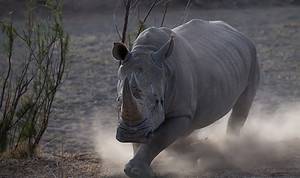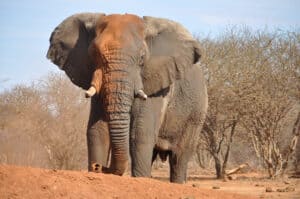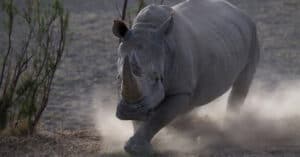- Unlike buffaloes or antelopes which learn to walk at once they take about a couple of days before being able to walk properly.
- They’re staging a comeback. White rhino figures which once plunged between 50 – 100, have now reached 20,000.
Rhinos grow up to become the second largest land animals after elephants, but they’re born as adorable calves. Let’s look at five incredible baby rhino facts – all with pictures of course! – and discover what makes rhino calves so unique!
1. Baby Rhinos have a Gestation Period Almost Twice the Length of Humans!
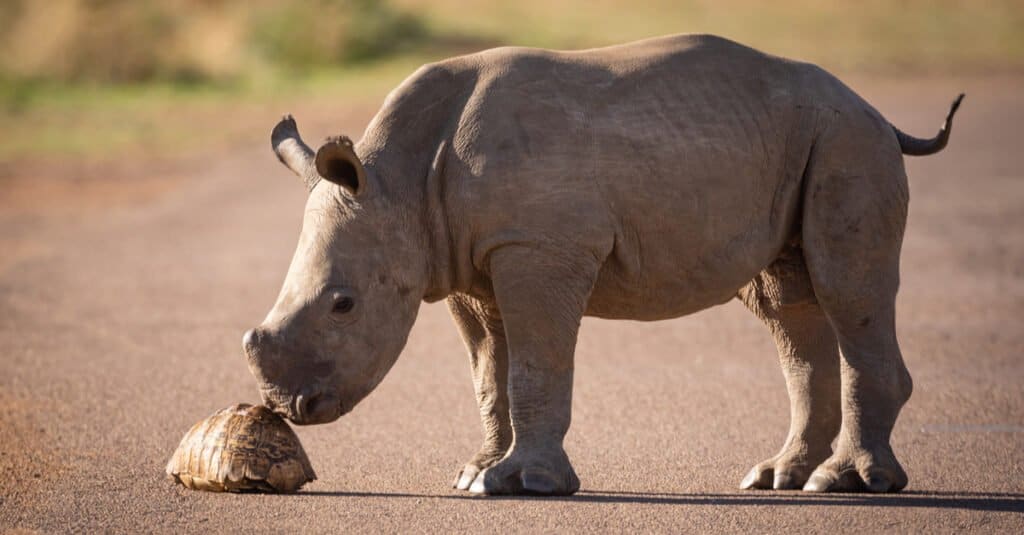
A rhino calf sniffing a turle
©Heinrich Neumeyer/Shutterstock.com
Humans have a gestation period – the time it takes from conception to when a baby is born – of about nine months. For a rhino, the gestation period is 15 to 18 months! Female rhinos will wait between 2 and 3 years before giving birth to another calf.
Do rhinos have twins? Only on rare occasions.
Regardless of the number born, the young will remain close to their mother for 36 months following which they will wander off to lead a solitary existence. (White rhinos however are somewhat more gregarious and may form herds.)
2. Rhino Babies Can Weigh As Much As a Full-grown Adult!
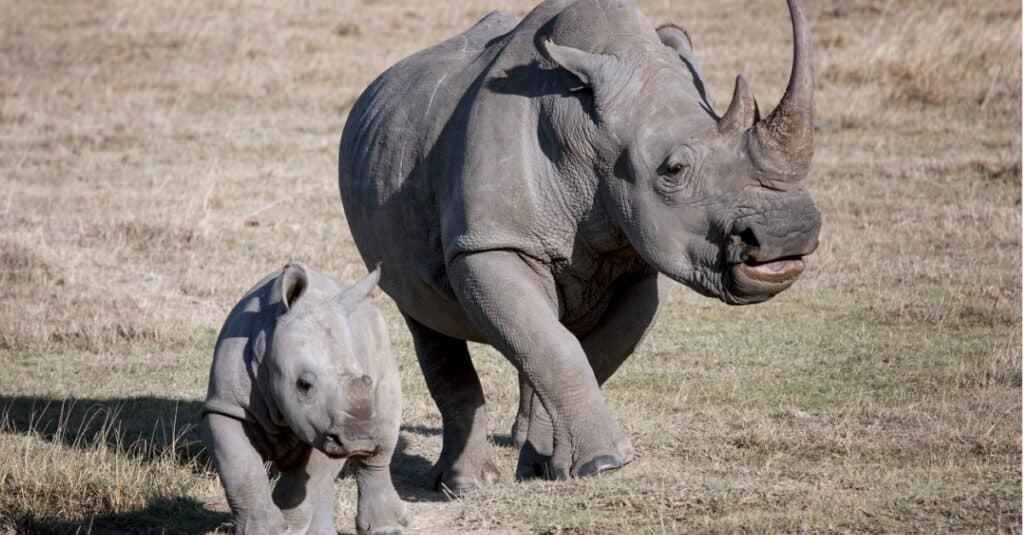
A female rhino with her calf
©iStock.com/robru
On July 29, 2019, a rhino baby was born in the San Diego Zoo Safari that weighed 148 pounds just two days after birth! The baby, named Edward, already weighed 220 pounds by mid-August. That is to say, baby rhinos can weigh the same amount as humans just days (or weeks) after their birth!
3. Baby Rhinos have a Defense Against Attack!
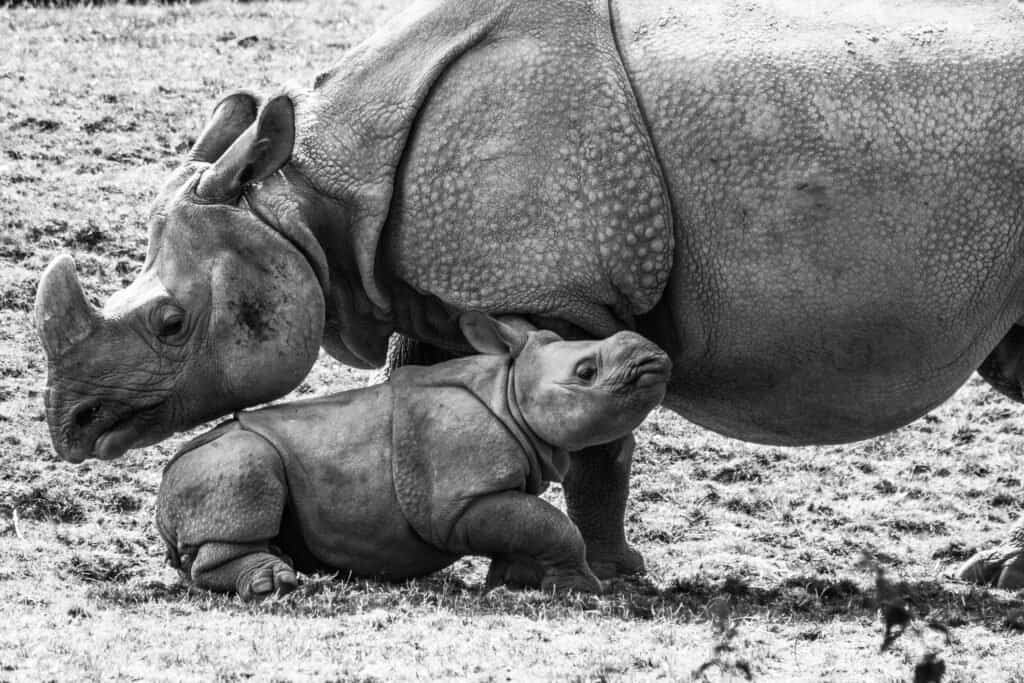
Mother Rhino looking after her new born baby
©Hill2k/Shutterstock.com
While baby rhinos often weigh more than 100 pounds upon birth, that’s still a relatively small meal for predators like lions and tigers that live in the range of different rhino species. Thankfully for baby rhinos, they have a unique defense against would-be predators like lions, tigers, and leopards!
The skin of a rhino can be up to two inches thick, giving them a form of “armor plating” against predators like big cats! Baby rhinos are born with thick skin which helps defend them as they rapidly grow in the weeks and months after their birth. Still, predators will attack juvenile rhinos, attacks from prides of lions have been recorded on rhinos that weigh more than 2,000 pounds.
4. Baby Rhinos Take a Couple Days to Walk
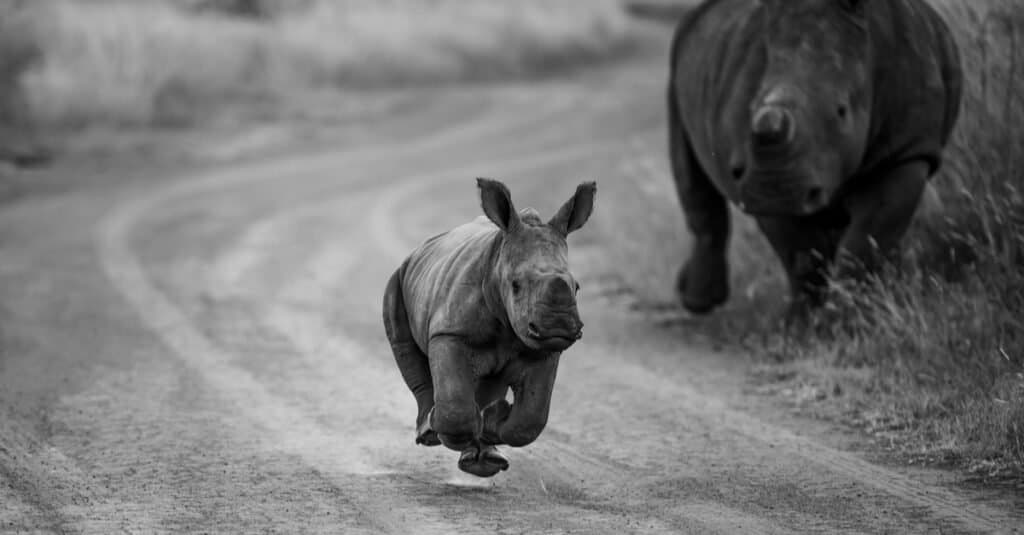
A white rhino calf running
©Corrie Barnard/Shutterstock.com
A rhino calf won’t be able to immediately become mobile like many other species of mammals, instead it takes a calf two-to-three days to become steady on their legs. During this time, it’s up to their mom to take care of them! Male rhinos leave shortly after mating. Female rhinos are fiercely protective of their young during this period.
5. Baby Rhinos are on the Rebound!

White rhino populations have rebounded from 100 to more than 20,000
©iStock.com/Paul-Briden
The population of white rhinos has rebounded steadily over the past 30 years. For example, while their population may have dipped as low as 50 to 100 in the wild, today it’s estimated there are around 20,000 white rhinos.
(Unfortunately, the northern white rhino population is now functionally extinct, as most the rebound has been in South Africa.)
White rhino breeding has been a success story in zoos across America. For example, the Virginia Zoo welcomed its first birth of a white rhino in July 2021. Earlier that same month, ZooTampa welcomed its own white rhino birth.
Several zoos around the world and the United States have successful white rhino breeding programs. The San Diego Zoo has placed particular emphasis on breeding white rhinos. The most recent birth at the San Diego Zoo occurred on August 22, 2021.
Up Next…
Keep reading these posts for more incredible information about key animal facts.
- Baby Moose: 8 Facts and Pictures: They’re the largest cervids and a newborn is capable of outrunning a human. Unearth even more intriguing facts about these adorable mammals.
- Baby Giraffe: 9 Facts and 9 Pictures: Did you know that giraffes can moo like a cow even though they look nothing alike? Discover what more there is to them in this post.
- Baby Penguin: 9 Facts and Pictures: Unlike most other eggs, theirs are hatched by their fathers, and when they emerge they’re covered in furry down. Unearth even more secrets of these adorable avians born in some of the most inhospitable regions on the globe.
The photo featured at the top of this post is © Corrie Barnard/Shutterstock.com
FAQs (Frequently Asked Questions)
What is a baby rhino called?
A baby rhino is named a calf, which is similar to other ungulates such as hippos and elephants. Another famous “calf” is from cows, which once again are an ungulate!
How big is a baby rhino?
Calves of rhinoceros species can weigh between 70 and 150 pounds. Remember that there are five different species of rhinos, with varying weights and physical descriptions. The smallest rhinoceros species are the Sumatran and Javan rhinoceros. Black rhinoceros calves weigh between 80 and 110 pounds.
For example, a black rhino born in Des Moines’ Blank Park Zoo weighed 80 pounds when born in 2016. Finally, white and Indian rhinos have the largest offspring which can range between 140 and 150 pounds at their largest weights.
How long do baby rhinos nurse?
Weaning in rhinos begins at two months, but may continue up until they’re nearly a year old.
Thank you for reading! Have some feedback for us? Contact the AZ Animals editorial team.



